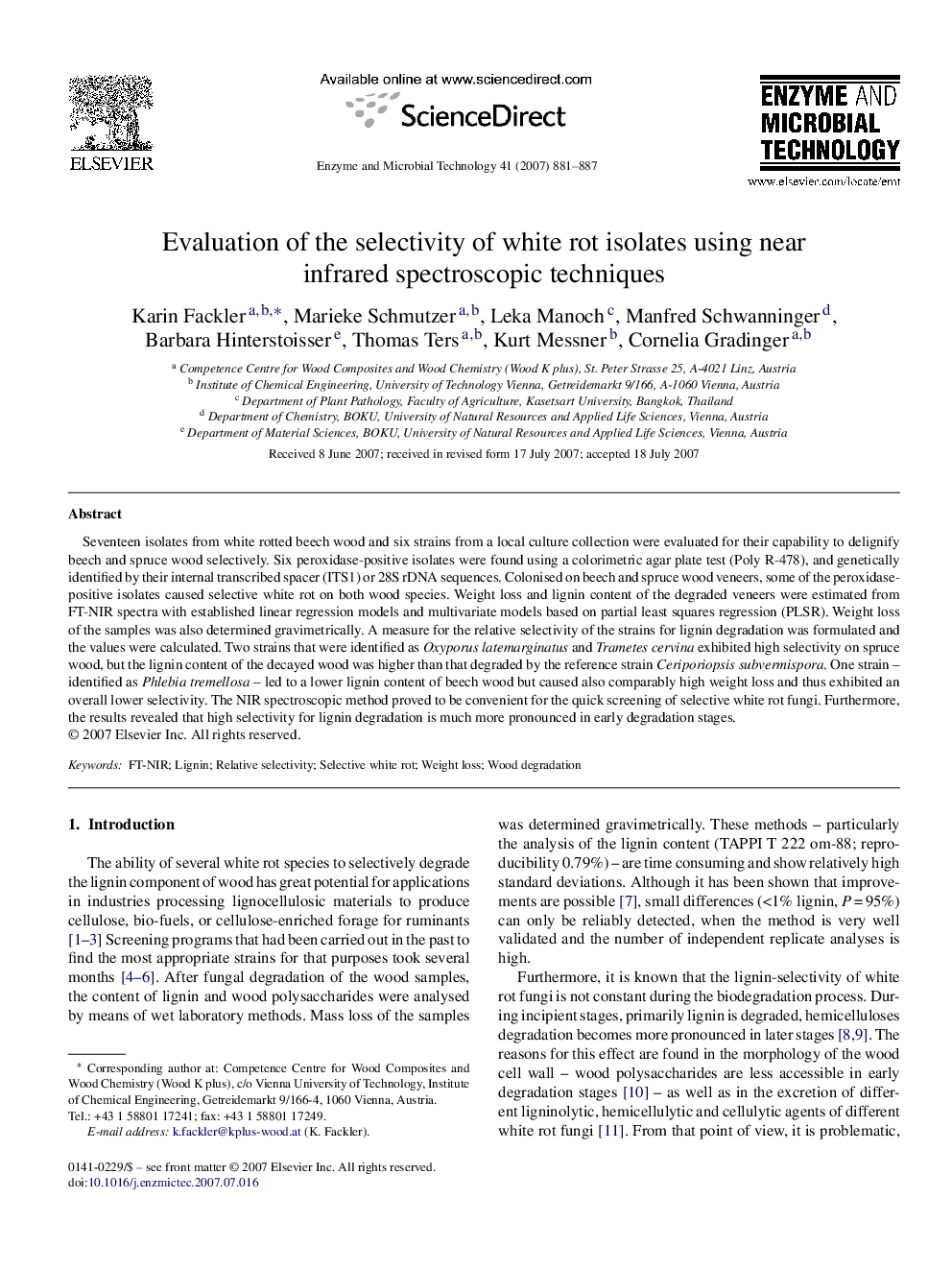| Article ID | Journal | Published Year | Pages | File Type |
|---|---|---|---|---|
| 18101 | Enzyme and Microbial Technology | 2007 | 7 Pages |
Seventeen isolates from white rotted beech wood and six strains from a local culture collection were evaluated for their capability to delignify beech and spruce wood selectively. Six peroxidase-positive isolates were found using a colorimetric agar plate test (Poly R-478), and genetically identified by their internal transcribed spacer (ITS1) or 28S rDNA sequences. Colonised on beech and spruce wood veneers, some of the peroxidase-positive isolates caused selective white rot on both wood species. Weight loss and lignin content of the degraded veneers were estimated from FT-NIR spectra with established linear regression models and multivariate models based on partial least squares regression (PLSR). Weight loss of the samples was also determined gravimetrically. A measure for the relative selectivity of the strains for lignin degradation was formulated and the values were calculated. Two strains that were identified as Oxyporus latemarginatus and Trametes cervina exhibited high selectivity on spruce wood, but the lignin content of the decayed wood was higher than that degraded by the reference strain Ceriporiopsis subvermispora. One strain – identified as Phlebia tremellosa – led to a lower lignin content of beech wood but caused also comparably high weight loss and thus exhibited an overall lower selectivity. The NIR spectroscopic method proved to be convenient for the quick screening of selective white rot fungi. Furthermore, the results revealed that high selectivity for lignin degradation is much more pronounced in early degradation stages.
